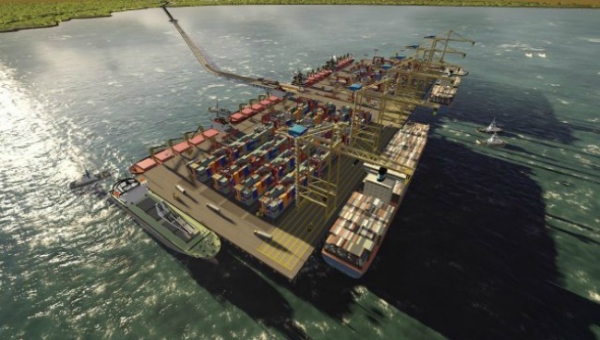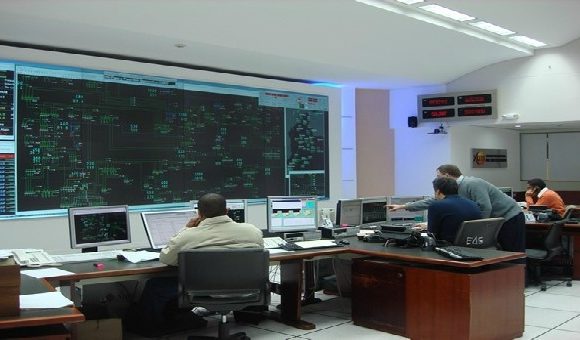Antioquia, Medellin to See Huge Economic Boost from Infrastructure Projects

Big infrastructure projects now underway including the “Prosperity Highways,” the “Toyo” tunnel, the new “Port Antioquia,” the “Navelena” dredging project on the Magdalena River, and the giant “HidroItuango” hydroelectric project collectively will bring a huge economic and social boost to Antioquia and Medellin starting in the next five years — and continuing long afterward.
So explained project directors, academic analysts and political leaders at the “ProAntioquia 40 Years” conference at Eafit University in Medellin on November 4.
The “Prosperity Highways” linking Medellin and southern Colombia to Caribbean ports (including the new “Port Antioquia”) by themselves will boost Antioquia’s gross domestic product (“PIB” in Spanish initials) annual growth to around 6%.
That’s about double Colombia’s recent national PIB growth, as Antioquia departmental planning director Maria Eugenia Ramos explained in her presentation to some 300 conference attendees here.
What’s more, the 36 smaller Antioquian municipalities in the area of influence of the “Prosperity Highway projects” (excluding Medellin) will see a big jump in employment and tax revenues (see “Antioquia’s ‘Prosperity Highways’ Will Boost Economy, Jobs, Transport: Study,” Medellin Herald, October 21, 2015).
Main portions of the “Prosperity Highway” projects in Antioquia would be completed by around 2020. But related projects could require a few more years of complementary work.
For example: the “Toyo” tunnel project –estimated to take about six years to build – will be connected to the “Prosperity Highways” projects.
The combination of “Prosperity Highways” and “Toyo” tunnel will slash freight-travel times between Medellin and the new Port Antioquia to about four hours, down from the more-than six hours that now separate Medellin from Uraba, on the Caribbean coast (see: “Antioquia Awards Construction Contract for Crucial ‘Toyo Tunnel’ Project,” Medellin Herald, October 15, 2015).
The “Toyo” tunnel – estimated to cost about COP$1.87 billion (US$657 million) – not only will require about six years of underground construction, but also will require several years of complementary road and smaller-tunnel projects along and near the tunnel route, according to the construction contractors.
Invias – the national government’s highway-project agency – estimates that it will launch its portion of construction on complementary projects tied to “Toyo” in 2019.
In total, completion of the tunnel and all related projects would take about 10 years (starting from now), meaning that some related segments of the “Prosperity Highways” tied to the “Toyo” tunnel probably would debut around 2024-2025.
Port Antioquia
In a related presentation here, Pio S.A.S. project director Andres Felipe Bustos explained that the US$410 million “Port Antioquia” project – one-third financed by Pio and the remaining 65% by foreign banks – would debut in 2018, assuming that project finance is closed promptly and that construction contracts are let by around March 2016.
The offshore ship docking facilities – connected to onshore freight-handling facilities via a three-lane, 4.2-kilometers-long, elevated viaduct — would feature automated cranes operated remotely via cameras and computer controls, thus boosting port efficiency, Bustos explained.
The “phase one” portion of the offshore facilities – for moving about 7 million tons/year of cargo — would be capable of handling “Super Post-Panamax” ships. The “phase two” facilities would double annual cargo-handling capacity.
The on-shore portion of Port Antioquia would cover 130 hectares, enabling convenient logistics for containers, vehicles, bulk cargo and general cargo, he explained.
The new port would be 40% closer – that is, around 350 kilometers closer — to Colombia’s principal cities that represent 70% of Colombia’s entire gross national product, he said.
Although this new port would represent a huge cost-and-time advantage for many freight shippers, it’s unlikely that Port Antioquia would threaten other major ports such as Buenaventura (the main Pacific port), Cartagena (the main Atlantic port) or Santa Marta (the principal coal-export terminal), he said.
Still, it’s possible to imagine an increase in highway freight movements between Buenaventura (Pacific) and Port Colombia (Atlantic), possibly providing a little competition to the Panama Canal, he added.
While the initial “Prosperity Highways” link wouldn’t be ready until around 2020 – or two years after “phase one” of Port Antioquia starts-up – existing nearby highways will still enable initial freight transport to and from the new port, he said.
But once the Prosperity Highways are completed, Colombia’s logistics-competitiveness ranking among all Latin American countries would jump from 23rd place today to third place, Bustos added.
Magdalena River Dredging
In a separate presentation to the ProAntioquia conference here, Navelena S.A.S. legal representative Jorge Barragan explained the COP$2.5 billion (US$877 million), 900-kilometers-long Magdalena River dredging project, which will open-up new freight-shipping opportunities all the way from Barranquilla (Atlantic Coast) to Barrancabermeja (Ecopetrol refinery site) and onward to Puerto Berrio, Puerto Triunfo and Puerto Nare (in Antioquia) and finally Puerto Salgar (Cundinamarca).
This giant dredging project actually involves a series of some 160 projects required to “unplug” waterborne freight transport, Barragan explained. The resulting “canal” in the river would be up-to-150-meters wide and at least seven feet deep, enabling year-round transport.
Navelena is now finishing detailed project studies and working on completion of financing. Once studies and financing are completed, the dredging project itself would take about five years, he said.
For Antioquia, the project would have big development impacts on Puerto Berrio and Puerto Triunfo, Barragan said. Development potentially could start to look like the US$1 billion “Impala” port project at Barrancabermeja, which is mainly for transport of hydrocarbons to and from Ecopetrol’s 250,000 barrels/day Barrancabermeja refinery.
HidroItuango Impact
In another presentation to the conference here, Medellin-based power utility EPM director Juan Esteban Calle highlighted the huge impacts resulting from the now-40%-complete, US$5.5 billion, 2.4-gigawatt (GW) “HidroItuango” hydropower project in northern Antioquia.
The first phase of power production is due to start in December 2018, with the second phase due for start-up in 2021. The project not only will have a positive economic and social impact on Antioquia, but on Colombia as a whole, Calle explained.
The power plant will enable production of 40-GW-hours daily once in full operation, and will provide EPM with annual earnings of about US$1 billion, he said.
Related highway projects connecting Ituango and other nearby towns to Medellin have resulted in drastic improvements in road travel times, he said. A new highway to Valdivia would be completed by 2016.
EPM also has invested tens of millions of dollars in new housing, schools, utilities and economic development programs for the people living in and around Ituango.
Because the HidroItuango project will raise water levels on the Cauca River behind the hydroelectric dam, EPM has now launched a new study to evaluate the possibility of a waterborne freight route between Santa Fe de Antioquia (west of Medellin) and Valdivia — with an onward highway freight connection to Puerto Berrio on the Magdalena River.
Thanks to “Prosperity Highway” projects linking Medellin to the Atlantic and also to the Magdalena River ports, the possibility of a new Cauca River water/highway intermodal link to the Magdalena means even more freight-logistics options soon could emerge for Medellin, Uraba, the rest of Antioquia, and other cities in Colombia.
















